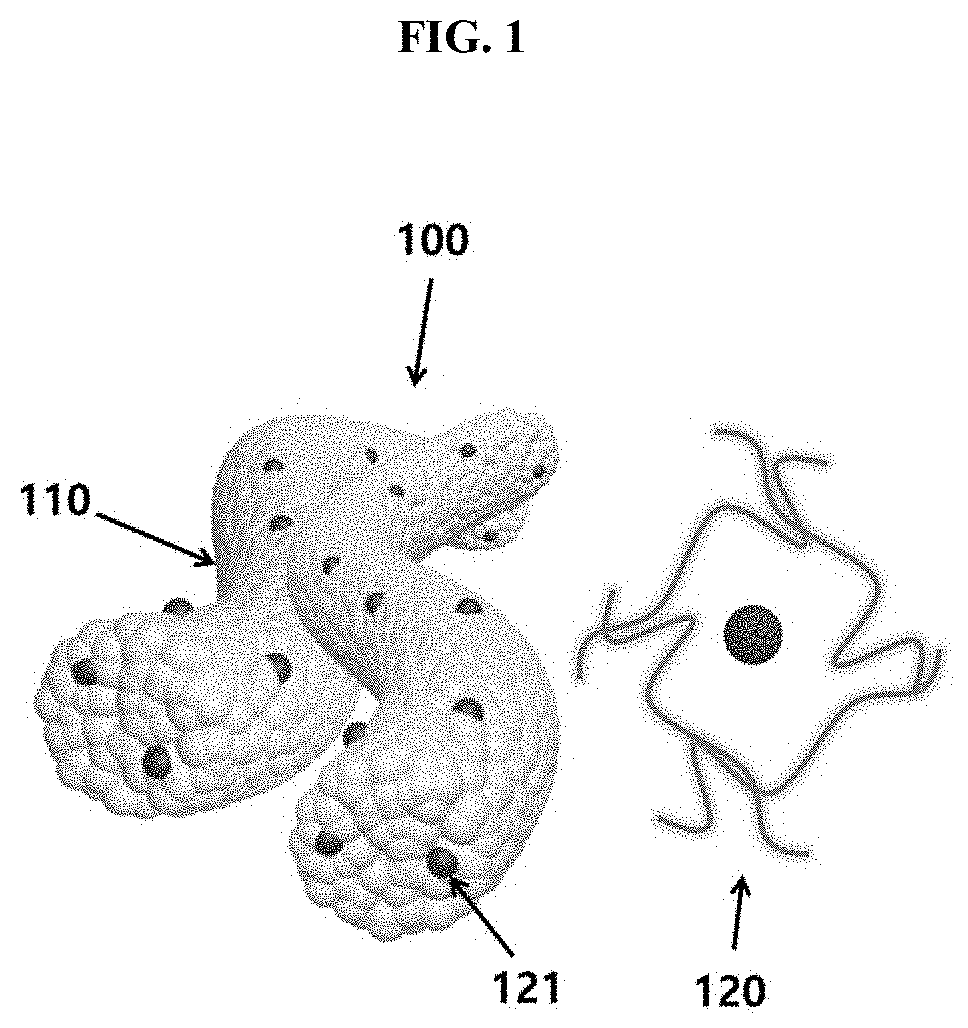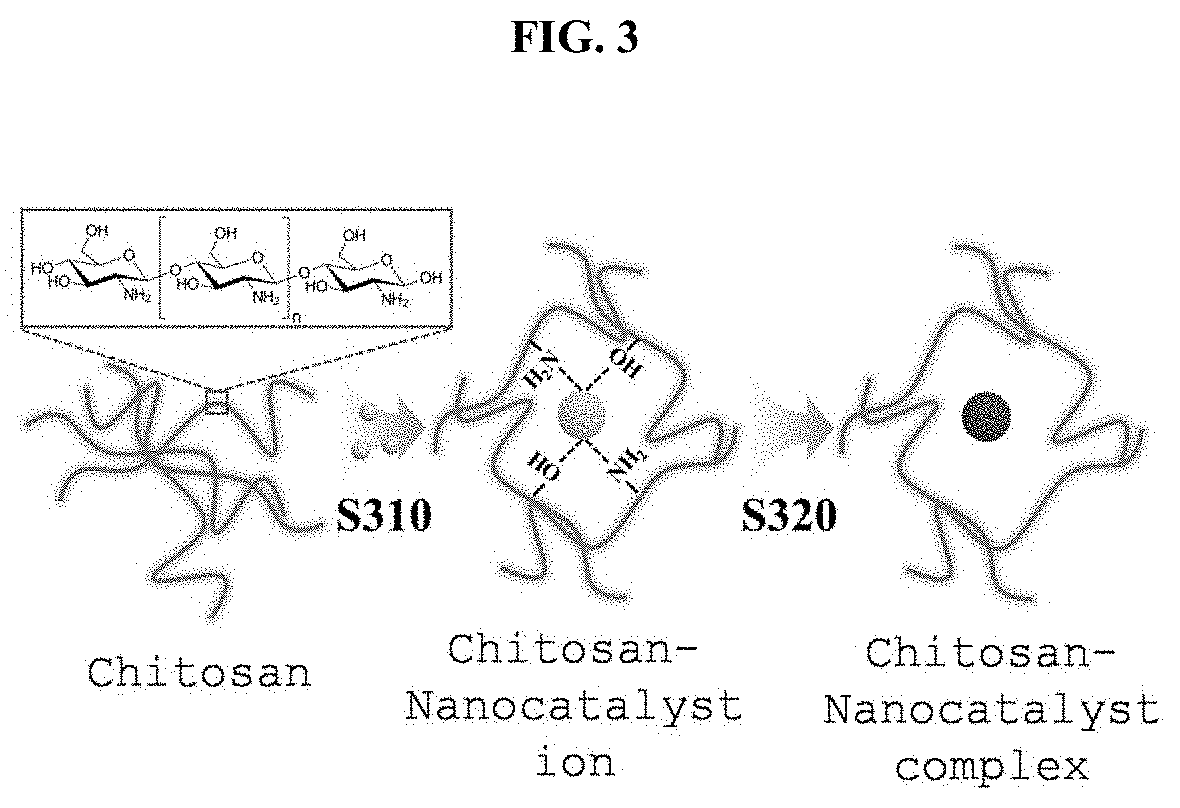Metal Oxide Nanofibers Including Functionalized Catalyst Using Chitosan-Metal Complexes, and Member for Gas Sensor, and Gas Sensor Using the Metal Oxide Nanofibers, and Method of Fabricating the Same
a metal oxide nanofiber and functional catalyst technology, applied in the direction of filament/thread forming, instruments, material analysis, etc., can solve problems such as organic matter, and achieve the effects of increasing the sensing characteristic, facilitating gas diffusion, and increasing the area of an electron depletion layer
- Summary
- Abstract
- Description
- Claims
- Application Information
AI Technical Summary
Benefits of technology
Problems solved by technology
Method used
Image
Examples
embodiment 1
of Chitosan with which Pt Nanocatalyst has been Combined
[0095]First, a condition in which chitosans may be dissolved by adding acetic acid of 0.1 mL to DI water of 9.9 mL was formed. Thereafter, chitosans of 0.1 g were added and stirred at 300 rpm at room temperature for 12 hours or more so that the chitosans were fully dissolved. Thereafter, a separately prepared Pt precursor (H2PtCl6.H2O) of 10 mg was added and stirred at 300 rpm at room temperature for 1 hour to 2 hours so that Pt ions were fully combined with the chitosans. Next, in order to reduce the Pt ions, combined with the chitosans, to Pt particles, a sodium borohydride (NaBH4) aqueous solution (1 mol / L) was added and stirred at 300 rpm at room temperature for between 1 hour to 3 hours. The fabricated solution is used when an electrospinning solution is fabricated.
[0096]FIG. 5 shows an image of a transmission electron microscopy of chitosans with which Pt nanoparticle catalysts fabricated by the process have been combined...
experiment example 1
ss and a Degree of Heat Transfer According to Thermal Treatment of Chitosans and Analysis of Residues
[0109]As may be seen from the images of the scanning electron microscopes, the nanofiber fabricated in the comparison example 2 shows a particle size of about 20 nm. In contrast, the nanofiber fabricated in the embodiment 2 shows a small particle size of about 10 nm. In order to check the reason, a change in mass and a degree of heat transfer according to the thermal treatment of the chitosans used in the embodiment 2 were checked. Furthermore, an attempt was made to check that the inorganic components of the chitosan remained as residues through a change in mass. Chitosans of about 50 mg were thermally treated from room temperature up to 700° C. in the air atmosphere at a heating rate of 5° C. / minutes, a change in mass and a degree of heat transfer were checked, and components remained as residues were analyzed.
[0110]FIG. 11 is a graph showing a change in mass and a degree of heat t...
PUM
| Property | Measurement | Unit |
|---|---|---|
| diameter | aaaaa | aaaaa |
| size | aaaaa | aaaaa |
| wt % | aaaaa | aaaaa |
Abstract
Description
Claims
Application Information
 Login to View More
Login to View More - R&D
- Intellectual Property
- Life Sciences
- Materials
- Tech Scout
- Unparalleled Data Quality
- Higher Quality Content
- 60% Fewer Hallucinations
Browse by: Latest US Patents, China's latest patents, Technical Efficacy Thesaurus, Application Domain, Technology Topic, Popular Technical Reports.
© 2025 PatSnap. All rights reserved.Legal|Privacy policy|Modern Slavery Act Transparency Statement|Sitemap|About US| Contact US: help@patsnap.com



